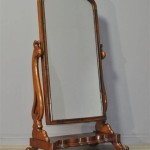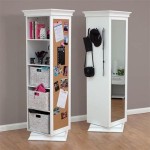Living Room Wall Mirrors: Reflecting Style and Light
Living room wall mirrors serve a dual purpose: they enhance the aesthetics of a space while also manipulating light and perceived dimensions. Selecting the right mirror involves considering size, shape, frame style, and placement to maximize its impact on the room's overall design.
Size and Shape: Creating the Desired Effect
The size and shape of a living room wall mirror significantly influence its visual impact. A large mirror can create the illusion of a more spacious room, particularly beneficial in smaller living areas. Oversized mirrors, often leaning against a wall rather than hung, have become a popular trend, adding a touch of casual elegance. Smaller mirrors, on the other hand, can be used strategically to highlight specific features or artwork, acting as accent pieces rather than focal points. Round mirrors soften a room's angular lines, while rectangular or square mirrors offer a more classic and structured look. Geometric shapes like hexagons and octagons add a contemporary touch, while ornate, freeform shapes introduce a sense of artistic flair.
Frame Styles: Complementing Existing Decor
The frame of a mirror is as crucial as the reflective surface itself. It contributes significantly to the mirror's overall style and how it integrates with the existing décor. A simple, thin metal frame offers a modern, minimalist aesthetic. Thick, ornate wooden frames, perhaps with intricate carvings or gilded details, can enhance a traditional or classical design scheme. Natural wood frames, such as bamboo or reclaimed wood, complement bohemian or rustic styles. For a more glamorous look, mirrored frames add sparkle and reflect even more light. Frameless mirrors offer a clean, contemporary feel and can blend seamlessly with various design aesthetics.
Placement: Maximizing Light and Space
Strategic placement is key to optimizing a living room wall mirror's functionality and aesthetic contribution. Placing a mirror opposite a window reflects natural light, brightening the room and creating a sense of airiness. This technique is particularly effective in rooms with limited natural light sources. Positioning a mirror above a fireplace mantel draws the eye upwards and can make the ceiling appear higher. Grouping smaller mirrors together creates a gallery wall effect, adding visual interest and a sense of depth. A mirror placed behind a sofa can create a focal point and add a touch of elegance. However, avoid placing mirrors directly facing each other, as this can create a disorienting, infinite reflection effect.
Mirror Types and Considerations
Beyond the standard wall-mounted mirror, several other types can enhance a living room. Full-length mirrors, often incorporated into wardrobes or leaning against a wall, offer practical functionality while also contributing to the room's design. Venetian mirrors, with their ornate, segmented designs, add a touch of opulence and old-world charm. Sunburst mirrors, radiating outward from a central point, create a dramatic focal point and introduce a touch of mid-century modern style. Consider the overall style of the living room and the desired effect when choosing a specific mirror type.
Maintenance and Care
Maintaining the clarity and brilliance of a living room wall mirror requires regular cleaning. Dust the mirror surface frequently with a soft, dry cloth. For more thorough cleaning, use a glass cleaner specifically designed for mirrors, avoiding harsh chemicals that can damage the reflective surface or the frame. When cleaning framed mirrors, take care not to allow cleaning solution to seep into the frame, as this can cause damage over time. Regular maintenance will ensure the mirror remains a beautiful and functional element of the living room décor.
Integrating Mirrors with Existing Decor
Successfully integrating a living room wall mirror requires considering the existing décor elements. The mirror should complement the overall style of the room, whether it be modern, traditional, or eclectic. Pay attention to the color palette, furniture styles, and existing artwork to ensure the mirror harmonizes with the overall design scheme. Consider the scale and proportion of the mirror relative to the other furniture pieces and the size of the room. A well-chosen and strategically placed mirror can enhance the living room's aesthetic appeal and create a more inviting and visually appealing space.
Budget and Availability
Living room wall mirrors are available in a wide range of prices, depending on size, materials, and craftsmanship. Simple, frameless mirrors or those with basic frames tend to be more budget-friendly. Ornate, antique, or designer mirrors can command significantly higher prices. Consider the allocated budget when selecting a mirror and explore various retailers, both online and brick-and-mortar, to find options that meet both aesthetic and budgetary requirements.

Living Room Mirror Wall Mirrors For Neutypechic

5 Easy Ways Living Room Mirrors Can Amp Up Your Space

Wall Mirror Design Ideas For Your Home Cafe

Image Gallery Page 426153183488350696 Artofit Interior Wall Design Hall Decor Entryway

15 Photogenic Feature Wall Designs That Can Make Your Home Stand Out Mirror Decor Living Room Design Interior

10 Magical Wall Mirrors To Boost Any Living Room Interior Design

Decorative Wall Mirrors 40 Design Catalogue For Living Room Hallway Bathroom

Neutype Wooden Arch Mirror Wall Vintage Decorative For Living Room Bedroom 40 X28 Gold Com

Mirror Decoration Ideas For Living Room Doğtaş

5 Decorative Wall Mirrors For Your Home Designcafe








